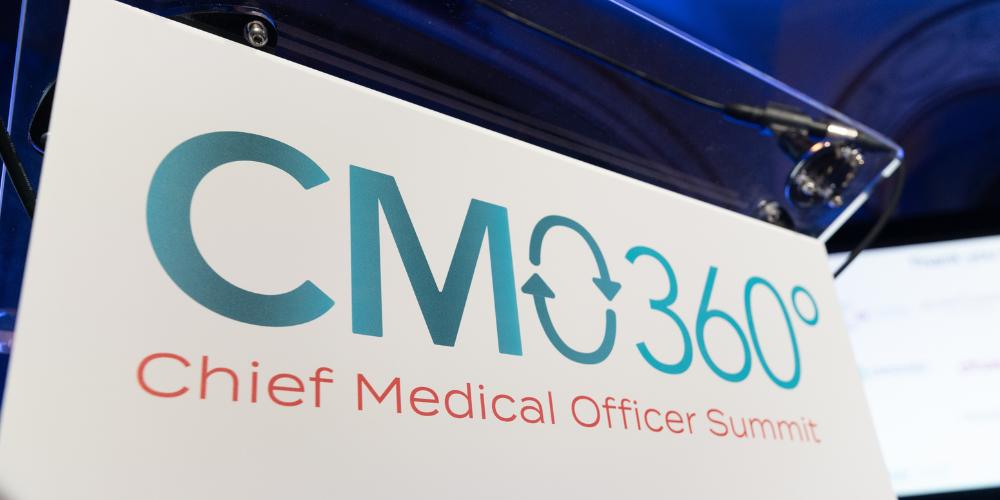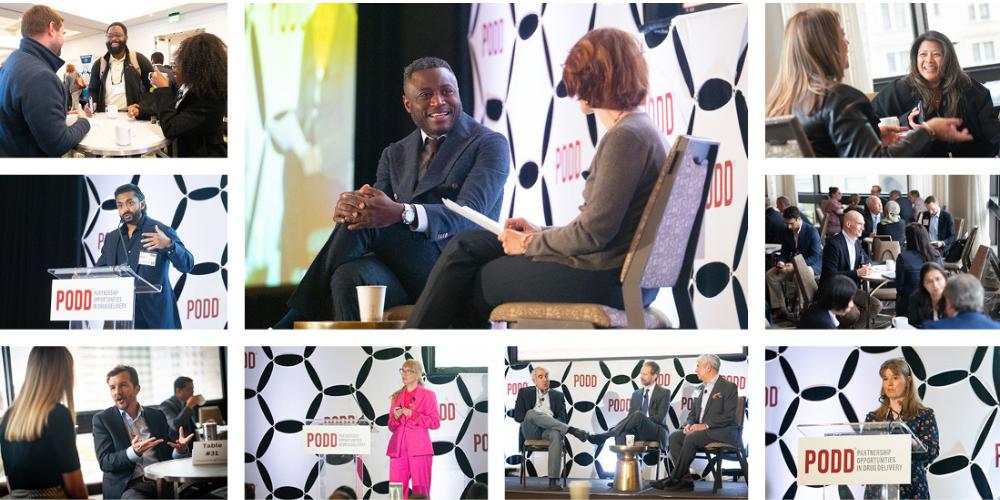
Tell us about the work that you're leading at Intellia.
Intellia was one of the first companies directed at treating people with CRISPR as a therapeutic. The approach Intellia took was to research and develop both in vivo and ex vivo CRISPR editing. When I arrived in 2020, we had two permanent clinical development employees. We built out the full-time group at the same time as we were going into the clinic. The first program was called NTLA-2001, now known as nexiguran ziclumeran or nex-z for short. Nex-z is an investigational product designed to knock out the TTR gene. The idea there is that a disease called ATTR amyloidosis is caused by accumulation of abnormal TTR protein in organs including the nerves and heart. Our working hypothesis is that if you could reduce the level of TTR by knocking out the gene, you could benefit patients with this disease.
The first patient dosed in our Phase 1 clinical trial was in November 2020. In the first two cohorts with three patients, we generated very promising data in knocking down the levels of TTR protein. That was put together as a publication for the New England Journal of Medicine in July 2021. We initially dosed patients with polyneuropathy. We were able to dose-escalate several more dose levels and we found that when we went to the highest level, we knocked down about ninety percent of the protein. After generating these data in patients with polyneuropathy, we moved to patients with cardiomyopathy where we also observed profound knockdown of the TTR protein.
After following 36 patients with cardiomyopathy for at least a year, we continue to be very encouraged with the knockdown data, including the level of reductions, its consistency and durability, as well as the emerging safety profile.
Based on these interim results, we’re very excited about the potential of CRISPR for the knockdown of TTR which may provide benefit to patients with TTR amyloidosis. Based on these results, we started a Phase 3 trial in March 2024, which is enrolling at a rapid pace around the world.
Can you share any updates on the MAGNITUDE or MAGNITUDE-2 trials?
MAGNITUDE is the name of the Phase 3 trial for patients with ATTR cardiomyopathy. The trial is being run at over 100 sites around the world. We’re fortunate to be working with many of the top amyloidosis experts world-wide who are recruiting patients in our trial. Cardiomyopathy can take two forms, with some patients having the hereditary form of the disease and others having what’s known as wild-type disease, which is really a disease of aging. About 90% of patients in our trials are from that second group and there are about 500,000 patients around the world with this disease. So, the disease appears to be much more common than we originally thought, with increasing diagnosis happening because of the new agents that are coming out to the clinic and people thinking about this diagnosis now that there are good treatments.
We recently started the MAGNITUDE-2 trial for patients with ATTR polyneuropathy, which is a rare inherited type of amyloidosis. Because of the effect size we’ve observed on TTR, for polyneuropathy, we’re able to design a Phase 3 trial with only 50 patients based on an endpoint of mNIS+7, which is a measure of a patient’s neuropathy.
"Education is super important when you have a new modality."
What about the HAELO trial?
In our HAE program, the objective is to knock out the gene for prekallikrein, which is a key mediator in the pathway that’s active when a patient has an attack of hereditary angioedema (HAE). For this rare disease we took the same approach with a dose escalation of the investigational drug.
Based on data from the initial patients dosed, we identified a dose that led to an 85-90% reduction in prekallikrein and went on to do a randomized Phase 2 to evaluate if this was the ideal dose for Phase 3. Most patients no longer have attacks and no longer need to take the drugs they were taking before they received NTLA-2002.
We have accumulated a significant amount of data from the Phase 2 trial, and we've also crossed a lot more patients of the Phase 1 and 2 over to receive the full Phase 3 dose of 50 mg. This includes both the patients who were on placebo and the patients who received less than 50 mg in the trials. We'll have a much-expanded experience before the Phase 3 results come in.
The Phase 3 trial itself that you asked about is called HAELO. This is a pivotal trial that we expect to finish enrolling later this year and will enroll 60 patients. It can be a very small trial because the effect we observed in our Phase 1 / 2 studies was very strong.
How do you approach Medical Affairs for a newer modality?
Education is super important when you have a new modality. In our case, we hired a Head of Medical Affairs, Ricardo Rocha, a few years ago. He has put together a terrific organization with several goals. One is to have field medical associates who interact with investigators and other HCPs in the trials and also physicians who are interested in better understanding CRISPR-based therapies.
We also must make sure people don’t confuse our investigational gene editing approach with other gene therapy approaches, such as AAV therapies requiring months of steroids to avoid liver inflammation. There is a big difference with gene editing, including administration. For our in vivo gene editing approach, patients take a steroid pill the day before and the day of treatment, and antihistamines to help reduce infusion-related reactions. Patients in our studies sit in an outpatient chair for about 4 hours and typically go home the same day.
The association with gene therapy has been challenging for us in terms of educating not only physicians but also investors and the world in general. Our therapeutic modality is the first one in its class and we’re working to demonstrate the uniqueness of our technology with our ongoing clinical trials.
"In many situations, we believe the best way to deliver is with nanoparticles, with a transient system to avoid long-term presence of the gene editing machinery."
How do you think about different approaches to delivering gene editing therapies?
In many situations, we believe the best way to deliver is with nanoparticles, with a transient system to avoid long-term presence of the gene editing machinery. In in vivo studies, we’ve observed that the drug was no longer detectable in a few days. This is more challenging when gene editing therapies are delivered using AAVs. The main issues with AAV are the expense, the difficulty to manufacture and the potential for the AAV and the gene editor to remain in the patient for their lifetime.
What are some best practices for regulatory interactions in the cell and gene space?
I had the privilege to lead the team that developed Kymriah at Novartis, so I have had the experience of the first CAR-T cell therapy to get approved, in which the relationship with the FDA was very productive.
In our recent experience at Intellia, the FDA has been very collaborative, and we’ve received robust and positive feedback on the approaches we have taken in gene editing. We have set up rigorous procedures both to test the short- and long-term safety and the efficacy of the drugs. We have RMAT status for NTLA-2002 in HAE, and also in polyneuropathy and cardiomyopathy with nex-z. That affords us the ability to facilitate the dialogue and the collaboration with the FDA. Each time we have worked with them on challenging issues, it has always been productive and has helped us to move forward with our programs expeditiously.
"Each time we have worked with the FDA on challenging issues, it has always been productive and has helped us to move forward with our programs expeditiously."
Any advice for CMOs new to cell and gene therapy?
These are things people can learn. When I worked on the first CAR-T cell therapy, I didn’t have any cell therapy experience, but I was coming from a background as a medical oncologist and hematologist developing drugs and treating patients with life-threatening diseases. For someone becoming a CMO in one of these areas, a solid clinical background is a great way to start.
In 2018, I joined Semma Therapeutics, which was a company using embryonic stem cells to produce beta cells to try to cure diabetes. Diabetes was a completely new area to me, but I learned about it in depth in my position. When Vertex bought Semma, I had a chance to go back into a small company again and joined Intellia as they were about to go into the clinic. I knew very little about CRISPR but when you join a new area, you can immerse yourself in the new area and associate with the best scientists and doctors in the area so that you learn quickly from the experts. If you have a good therapy, you attract terrific investigators and can get a very in-depth understanding of the disease. If someone is interested in drug development and has a strong background, they can move and learn other diseases and modalities which they may not have known much about previously.
Anything else?
A key part of the future for gene editing is drug delivery to other parts of the body. So far, we’ve focused on the liver in our clinical studies. We are also exploring delivery to other tissue types, including through some of our external collaborations.
Speaker








